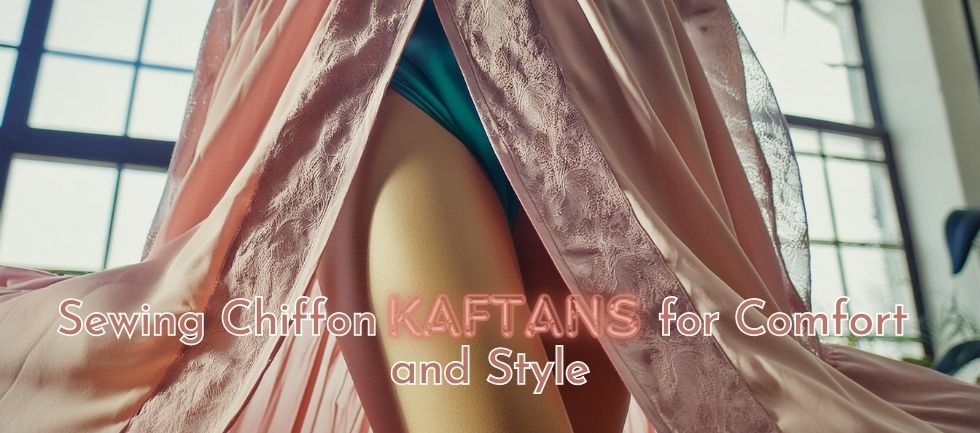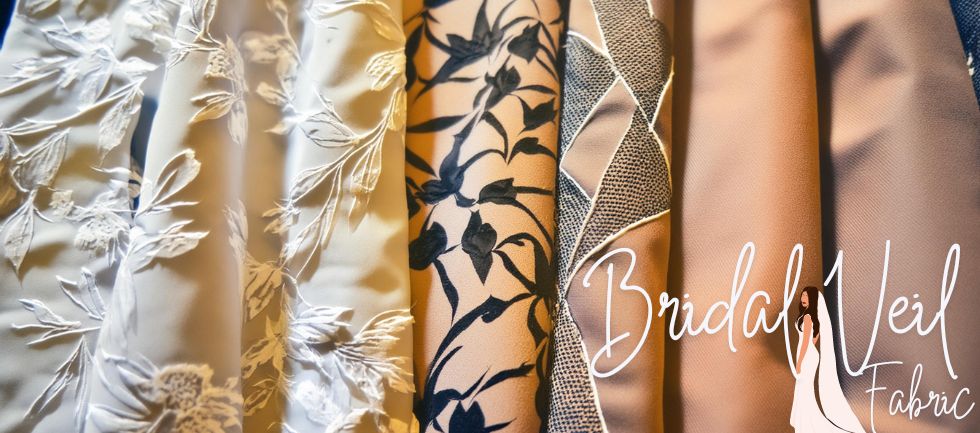Chiffon kaftans are the epitome of elegance and comfort, merging luxurious fabric with a timeless, flowing design. The kaftan, which originated in ancient Mesopotamia, has evolved into a fashion staple, adored for its versatility and ease. Chiffon, with its lightweight and sheer qualities, adds a touch of sophistication, making it perfect for this garment. Sewing a chiffon kaftan might seem daunting due to the delicate nature of the fabric, but with the right techniques and a bit of patience, you can create a stunning piece that enhances your wardrobe.
Here we will discuss the process of how to sew chiffon kaftan?.
What is Chiffon Fabric?
Chiffon is a lightweight, plain-woven fabric with a slightly rough texture due to the highly twisted yarns used in its construction. It can be made from silk, polyester, or nylon, each offering different levels of sheerness and texture. Silk chiffon is the most luxurious and softest, but it’s also the most challenging to work with due to its delicate nature.
When selecting chiffon for your kaftan, consider the drape and opacity of the fabric. A slightly heavier chiffon with a good drape will hang beautifully without being too transparent. Also, choose a color or print that complements your personal style. Bold prints can make a statement, while soft, pastel hues offer a more understated elegance.
Prepare Your Chiffon Fabric
Before you start cutting and sewing, it's crucial to prepare your chiffon fabric properly. Chiffon tends to fray easily, so handling it with care is essential. Begin by washing and pressing the fabric to remove any sizing and to pre-shrink it. Use a gentle cycle with cold water and a mild detergent, then air dry it flat to avoid any distortion. Iron the chiffon on a low setting, using a pressing cloth to protect it from direct heat.
When cutting chiffon, use sharp scissors or a rotary cutter to achieve clean edges. To prevent the fabric from shifting, lay it on a large cutting mat and use pattern weights instead of pins. If you need to pin, use fine, sharp pins sparingly and place them in the seam allowances to avoid making holes in the fabric.
Create a Pattern and Cut the Fabric
A kaftan pattern is typically simple, consisting of a front and back piece with wide, flowing sleeves. You can draft your own pattern or use a commercial one. If drafting your own, take accurate measurements of your bust, waist, and hips, adding ease for a comfortable fit. Sketch out the pattern on paper, ensuring the neckline, sleeves, and hemline are to your desired specifications.
Once your pattern is ready, lay the chiffon flat on the cutting mat, and place the pattern pieces on top, securing them with pattern weights. Carefully cut around the pattern, taking your time to ensure accuracy. It’s advisable to cut one layer at a time to prevent the fabric from slipping.
Sewing Techniques for Chiffon
Sewing chiffon requires specific techniques to manage its slippery and delicate nature. Here are some essential tips:
- Use the Right Needles and Threads
Use a fine, sharp needle, such as a size 70/10 or 65/9, to prevent snags and holes in the fabric. For thread, choose a lightweight, high-quality polyester thread that matches the color of your chiffon.
- French Seams for a Clean Finish
Chiffon frays easily, so using French seams will give your garment a neat and professional finish. To create a French seam, start by sewing the fabric wrong sides together with a narrow seam allowance (about 1/4 inch). Trim the seam allowance close to the stitching, then press the seam to one side. Next, fold the fabric right sides together and sew another seam with a slightly wider allowance, encasing the raw edges.
- Handle Hems and Edges
For hems and edges, a rolled hem or a narrow hem is ideal. A rolled hem can be achieved using a rolled hem foot on your sewing machine, which rolls the fabric under itself as you sew, creating a neat, tiny hem. Alternatively, you can use a narrow hem by folding the edge over twice and stitching close to the fold.
Design the Kaftan
With your fabric prepared and your sewing techniques ready, it’s time to start constructing your kaftan.
- Sew the Shoulder Seams
Begin by sewing the shoulder seams, using a French seam for a clean finish. Pin the fabric wrong sides together and sew a narrow seam, trim the excess, press, and then sew a wider seam with the right sides together.
- Attach the Sleeves
If your pattern includes separate sleeve pieces, sew them onto the armholes next. Chiffon can be tricky to ease into curves, so go slowly and use plenty of pins. Again, French seams are recommended for a neat finish.
- Sew the Side Seams
With the sleeves attached, sew the side seams from the sleeve cuffs down to the hemline. Use French seams to prevent fraying and ensure a smooth inside finish.
- Finish the Neckline
The neckline can be finished with a bias binding made from the chiffon or a matching fabric. Cut a bias strip, fold it in half lengthwise, and sew it to the neckline edge, right sides together. Fold the binding over to the inside and stitch it down, enclosing the raw edges.
- Hemm the Kaftan
Finish the kaftan by hemming the sleeves and bottom edge. Use a rolled hem or narrow hem for a delicate, professional look. Press all seams and hems gently to set them.
Add Decorative Elements
To enhance the beauty of your chiffon kaftan, consider adding decorative elements. Beading, embroidery, or lace appliqués can add a touch of glamour and personalization. However, be mindful of the delicate nature of chiffon and avoid heavy embellishments that could weigh down the fabric or cause it to tear.
- Beading
Hand-sew beads along the neckline, sleeve edges, or hem for a sparkling accent. Use lightweight beads and a fine needle, and stitch each bead individually to prevent damage to the chiffon.
- Embroidery
If you’re skilled in embroidery, you can add intricate designs to your kaftan. Use a hoop to keep the fabric taut and prevent puckering. Choose fine embroidery threads and delicate stitches to complement the lightness of the chiffon.
- Lace Appliqués
Lace appliqués can be sewn onto the chiffon for a romantic touch. Position the lace where you want it, pin it in place, and hand-sew around the edges with tiny stitches to secure it.
How to Care for Your Chiffon Kaftan
To ensure your chiffon kaftan remains beautiful and lasts for years, proper care is essential. Always hand wash or use the delicate cycle on your washing machine with cold water and a gentle detergent. Avoid wringing out the fabric; instead, press out excess water with a towel and lay it flat to dry. If ironing is necessary, use a low heat setting and a pressing cloth to protect the fabric.
Store your chiffon kaftan in a cool, dry place, preferably hanging to prevent wrinkles. If hanging is not possible, fold it carefully with tissue paper to prevent creases.
Conclusion
Do you love to create your own chiffon kaftan? This guide will help you know all the steps of creating chiffon kaftan. If you are looking for high-quality chiffon fabric at the lowest prices. You can visit our lightweight chiffon fabric collection to buy your favorite color fabric.



